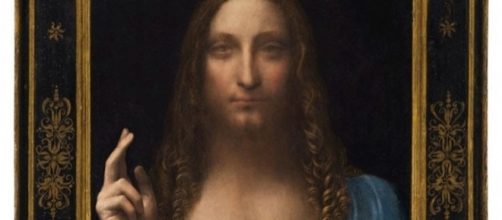Are you looking to redecorate your home by any chance, say to hang something new over the living room couch? You’re in luck. On Nov. 15, you can pick up a Leonardo Da Vinci painting at Christie’s New York auction house for a cool $100 million. If the price is right, go for it, and then donate it to a museum to share with the rest of the world. Owning Renaissance art is like buying Central Park for yourself. Some things belong in the public domain – especially since there are only 20 works that have been certified as his, 19 of which are held in collections that the general population can visit.
The Royals have it
The painting - a half-length portrait of Christ titled “Salvator Mundi” (Savior of the World) robed in rich reds and blues offering a blessing to the viewer – has been privately owned for a long time, beginning with 17th century King Charles of England who kept the picture in his wife’s chambers. The last known person to own it was the Duke of Buckingham’s bastard son, who sold it at auction.
Down to earth
Salvator Mundi didn’t surface again until the start of the 20th century when Sir Charles Robinson purchased it thinking it was by the Da Vinci groupie Bernardino Luini, who painted holy figures the way his idol did - like your next door neighbor. The same goes for the Holy Infant.
Luini pictured Him more cuddleable than celestial. (Check out “Madonna and Child with Saints Sebastian and Roche,” painted in 1520).
Follow the money
One may well wonder why “Salvator Mundi” is credited to Leonardo Da Vinci, especially given that the face of Christ was painted over and sold at a Sotheby’s auction in 1958 for $1,339. It wasn’t until 2005 that the painting popped up again at a small provincial auction. And for the half-dozen years that followed, efforts were made to prove the painting a Da Vinci. Apparently, it was proved because in 2011 it ended up in a show at the National Gallery titled “Leonardo da Vinci: Painter at the Court of Milan.”
Who really did it?
But how can a painted-over picture originally attributed to a follower of Da Vinci end up certified as the real deal?
To hear Christie’s Old Master specialist Alan Wintermute tell it, there was “strong circumstantial evidence.” (The image is believed to have been made for King Louis XII, who was known to invite Da Vinci to be his court painter). But when it comes to “Salvator Mundi,” history references the British monarch, not the French one. Another thing: an art dealer and a collector bought the picture in 2005 for $10,000. Keeping in mind the current price tag of $100 million, there certainly was an incentive to see it as a Da Vinci.
And guess who owns it now and stands to reap big rewards from the sale? Russian billionaire Dmitry Rybolovlev. Those Kremlin folks sure get around, don’t they?


